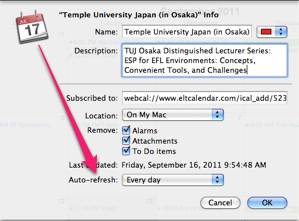Ibaraki JALT:
Teachers Unions in Japan (and chapter members' presentations)
Date: Sunday, June 18th, 2006 Time: 9:00 AM - 12:00 PM
Speaker: Robert Aspinall, and Chapter Presenters
Description:
Teachers Unions in Japan, Robert Aspinall. This presentation is based on the presenter's book (which is based on his PhD thesis.) The splitting into two of Nikkyoso (the Japan Teachers Union) in 1989 was a highly significant event for the union itself and the organisations andinstitutions with which it was closely connected. This book uses this event as a means of exploring both the internal structure of the union itself as well as its location within the Japanese political and education systems. Several theoretical models, by scholars such as Schoppa, Rohlen, and Muramatsu and Krauss are used in order to carry out this analysis. The schism occurred at a time of change within Japanese education, politics and trade unionism. So, in the process of analysis, various shortcomings caused by the historically contingent nature of these models are identified and modifications made.
The book seeks to explain why the schism took place and why it took theform that it did. It examines the events of the schism at three levels: national, prefectural and local. It concludes that the main single cause of the schism was the decision to affiliate the union with the new national federation, Rengo.
The book also looks at the change in direction of post-schism Nikkyoso education policies and analyses these policies in the light of the broader debate on education taking place in Japan in the 1980s and 1990s.
It is argued that the confrontation between union and government that characterised much of the postwar debate on education in Japan is now much reduced, and is being replaced by a more pragmatic approach that focuses on specific educational problems rather than on ideological differences. Schoppa model of education policy-making is modified in order to take account of these developments.
Finally, the book examines the schism within the context of the realignment taking place within Japanese politics in the 1990s. It is argued that the changes undertaken by Nikkyoso were necessary in view of the changing political environment, and that the collapse of the Japan Socialist Party illustrates the dangers of a failure to adapt to the new times.
Presentations by Chapter Members
Teacher and Student Motivation, and Sociocultural Influence by Phillip Otake.
Please contact Martin Pauly, Program Chair, if you are interested in presenting in the session. Each presentation lasts 30 minutes (including Q&A). For detailed info. and updates, read the chapter webpage www.kasei.ac.jp/jalt/.
Organization: Ibaraki Chapter of the Japan Association for Language Teaching (Ibaraki JALT)
Cost: 2,500 yen (overnight)
Venue: Ibaraki University Seminar House in Daigo, Okukuji Prefectural Nature Park
Location: Daigo City, Ibaraki Prefecture, Japan
![]() Add this to iCal
Add this to iCal
![]() (Need help?)
(Need help?)
![]() Add to Outlook
Add to Outlook
![]() (Need help?)
(Need help?)
Contact Ibaraki JALT
Website: http://ibarakijalt.blogspot.com/
Email QR Code:
Email QR Code:








